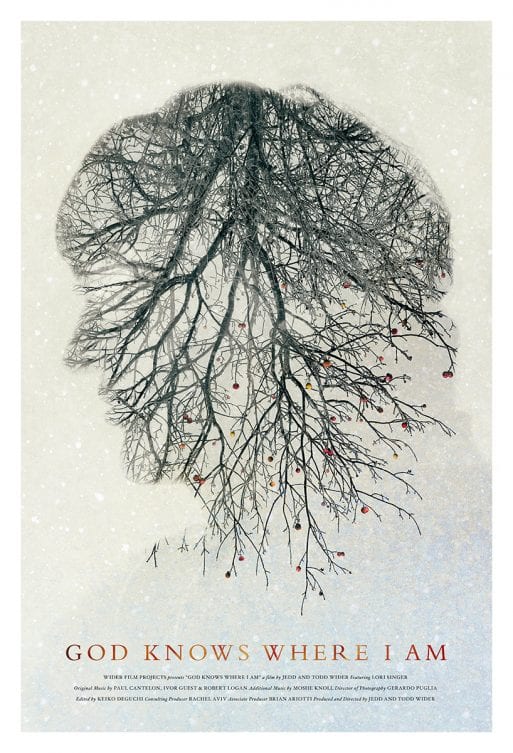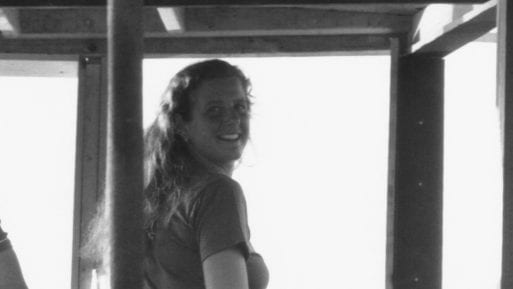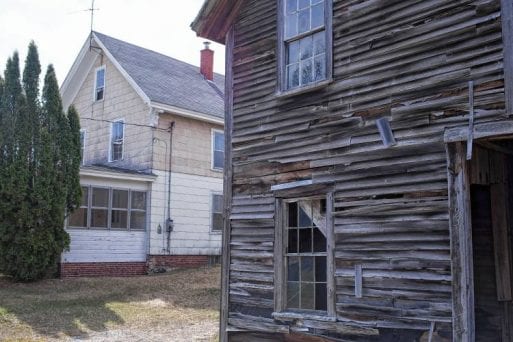
Credit: Wider Film Projects
“God Knows Where I Am,” a documentary produced and directed by Jedd and Todd Wider, is the tragic and sometimes shocking story of Linda Bishop, a vibrant, well-educated, middle-class single mom whose life was derailed by mental illness. Set mainly in the empty, ramshackle farmhouse where Bishop survived on apples and water through the freezing New Hampshire winter of 2007, it is a powerful statement about a mental health system that fails to protect the most vulnerable and the real-life consequences that failure brings about. From Linda’s daughter, Caitlin, to her sister, Joan, to the co-owners of the home where Bishop eventually died, the people affected by Linda’s descent into madness are woven through the film like a tapestry of bitterness, disappointment and pain.
“God Knows Where I Am” begins with a prosaic winter scene — a gentle snowfall settles on the eaves of an old farmhouse in an obvious state of disrepair. We see the inside of the home — broken old furniture, an attic cluttered with old scrapbooks, discarded books and the detritus of the former tenants’ lives. And in that attic, a single chair, turned so the occupant could look out the window to the street below — the chair where Linda spent much of her last, lonely months.

Linda Bishop was a vibrant, loving woman and a devoted mom until mental illness destroyed her life.
Credit: pbs.org
From there, the movie spins off into interviews with the people who knew Linda in life and those who investigated her death. Along with entries from the journals found with Linda’s body (read by award-winning actress Lori Singer), they tell a story that is all too familiar to anyone who has experience with mental illness: a vibrant, well-liked, devoted young mother begins behaving oddly, seemingly out of the blue. Believing she is being pursued by the “Chinese Mafia,” Linda leaves her home with daughter Caitlin in tow and goes to stay with relatives. Not long after that, she disappears entirely, leaving Caitlin, whose bitterness is almost palpable as she talks about her mother’s illness, alone.
Once she left her family, Linda’s life followed a predictable trajectory. Homeless, she lived a nomadic lifestyle that eventually landed her in trouble with the law. After being diagnosed with severe bipolar disorder and schizophrenia, she received treatment intermittently, but always stopped taking her medicine when her symptoms improved. Eventually, after assaulting a prison guard, she was committed to the New Hampshire State Hospital in 2006. But after successfully fighting an attempt by her sister to have her declared mentally incompetent, on Oct. 3, 2007, Bishop was released.
Three months later, Linda Bishop was dead. Her official cause of death was starvation and dehydration. But her journals convey all too clearly that her untreated psychosis was the driving force behind her demise.

The farmhouse where Linda Bishop died.
Credit: Groff Forrester/Concord Monitor
A Systemic Problem
What happened to Linda Bishop was terrible and shocking, but the sad truth is that her situation was far from unique. In the United States today, over 550,000 people are homeless on any given night, and fully one in four of those people are seriously mentally ill. And while the majority of the homeless are housed in community-based shelters, over 30 percent live as Bishop did — on the street, in cars, or in abandoned buildings, often without basic sanitation or heat. Each year, about 700 homeless Americans die of hypothermia, and many others die from simple self-neglect.
Paralyzed by paranoia, Bishop failed to reach out for help or even to ask for food, despite the fact that her closest neighbor was less than a 500 yards away. Cut loose by a system that did nothing to ensure her basic needs would be met, she — like thousands of other mentally ill Americans — simply disappeared.
“We’re supposed to be the greatest country in the world,” Joan Bishop says in the film. “And yet we allow this kind of thing to happen to someone who is defenseless in a lot of ways, and really cannot advocate for themselves, and cannot stand up, and say, ‘I need help.’ The system let her down. It caused this terrible death to this person who did not deserve it,” she adds.

A page from Linda Bishop’s journal chronicling her last days.
Credit: godknowswhereiam.com
A Distressing Film
To be clear, “God Knows Where I Am” is a very distressing film. Listening to Singer read page after page of Bishop’s journal entries, the suffering woman’s fear and desperation are as evident as her complete inability to leave her self-imposed prison and ask for help. As Bishop counted down the number of apples she had left, I felt like I was watching a plane crash in slow motion — helpless to change the outcome, but helpless to turn away.
And perhaps that is exactly what the Wider brothers intended to do with this film — to shine a bright enough light on the plight of the mentally ill and the homeless that, at least for 120 minutes, we are forced not to look away. Perhaps chronicling Linda Bishop’s suffering and the suffering of those who loved her was their attempt to make us take the blinders off — if only for a little while — and see that homelessness and mental illness won’t go away by themselves.

 “God Knows Where I Am” Directed by Jedd and Todd Wider
“God Knows Where I Am” Directed by Jedd and Todd Wider


 How to Comfort A Dying Loved One
How to Comfort A Dying Loved One
 Our Annual Seven Holiday Gifts for Someone Who Is Grieving, 2024 Edition
Our Annual Seven Holiday Gifts for Someone Who Is Grieving, 2024 Edition















